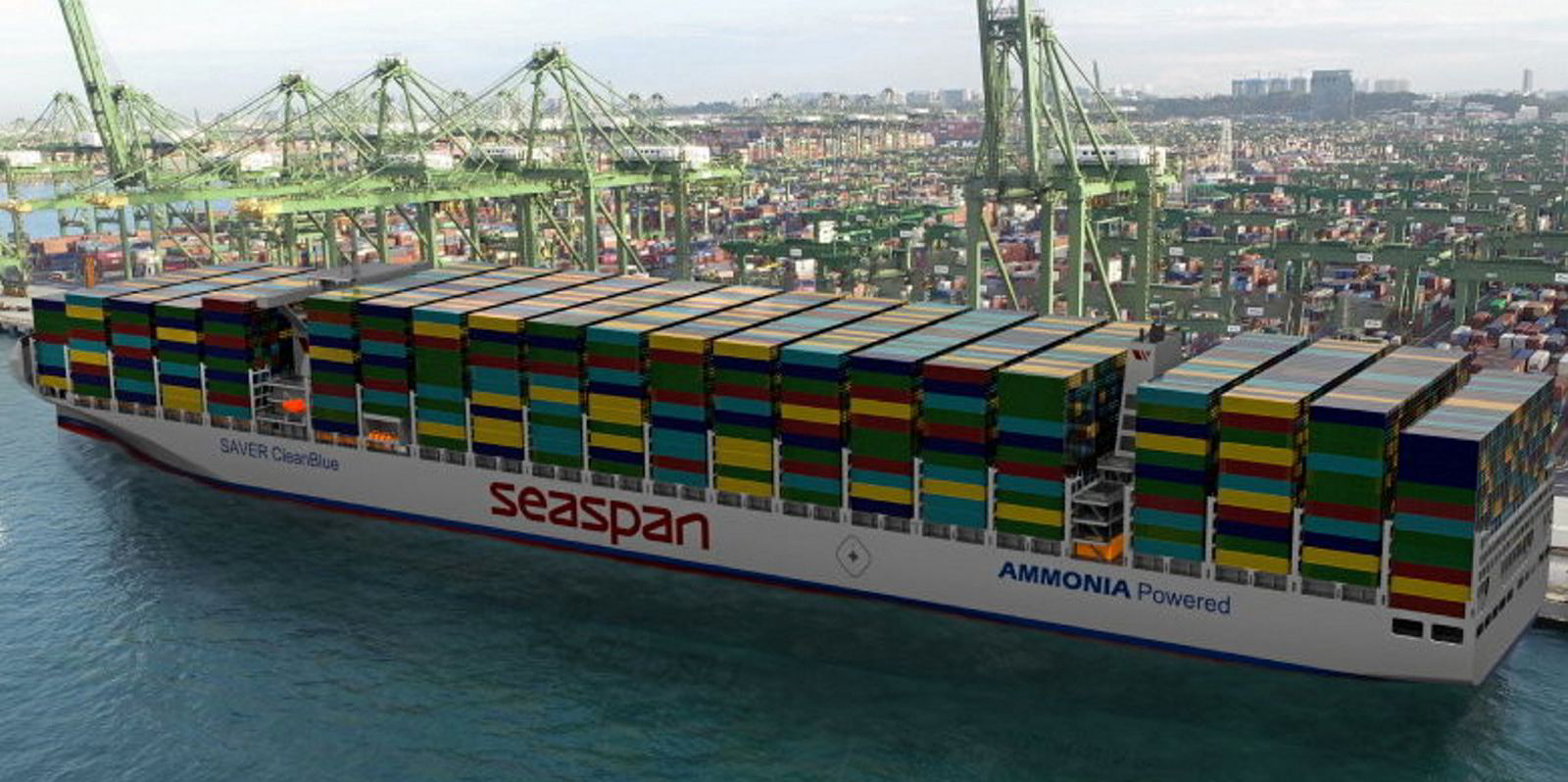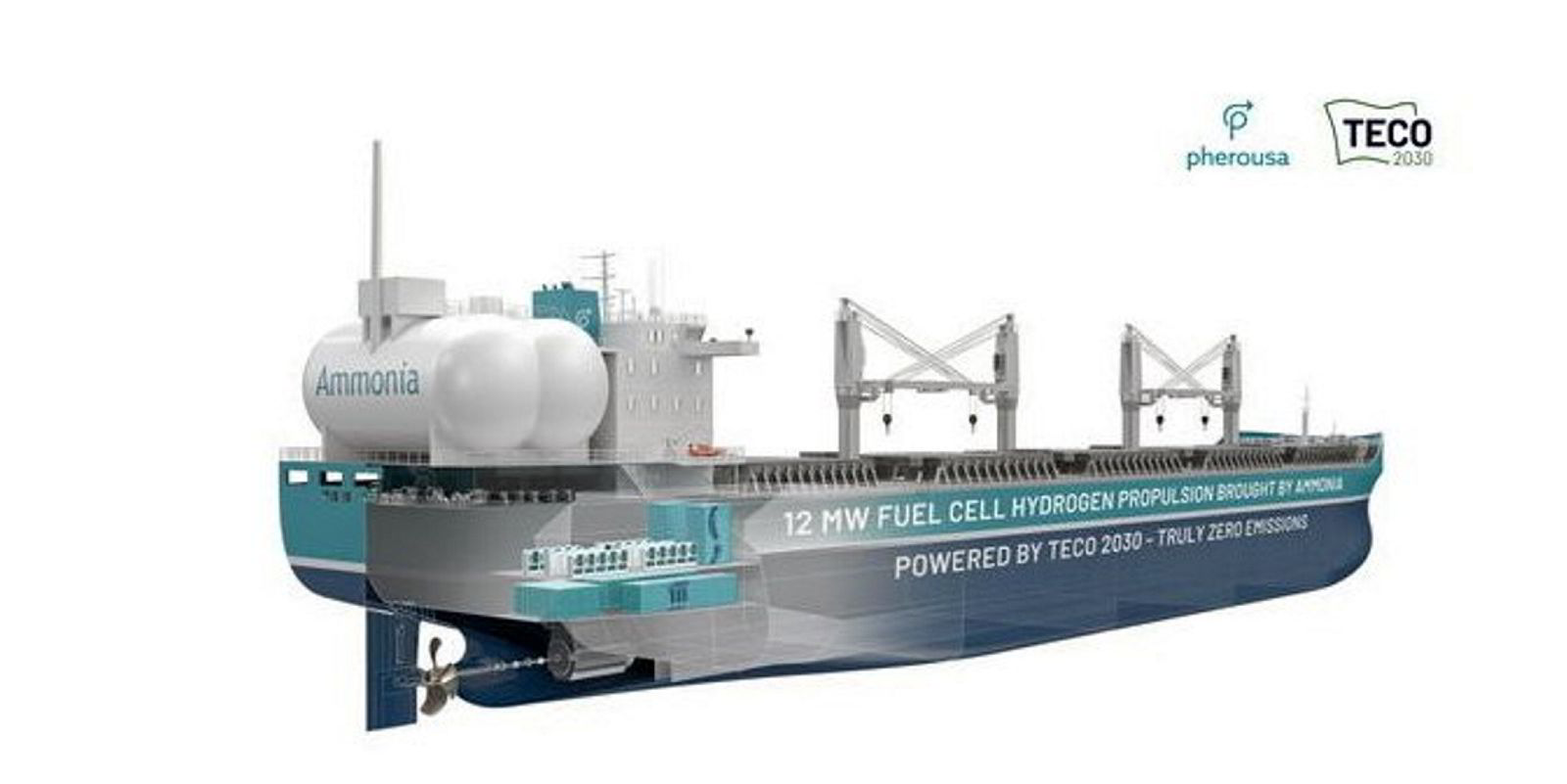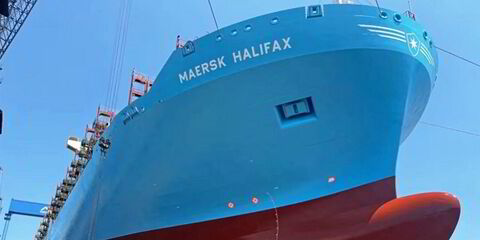Canadian shipowning giant Seaspan has revealed a design project that could see the first large ammonia-fuelled container ship hit the water.
The group has been working with the Maersk Mc-Kinney Moller Center for Zero Carbon Shipping on a 15,000-teu neo-panamax dual-fuel prototype.
A new report released today by lead authors Sebastian Brindley of Seaspan and Thomas McKenney from the Maersk Mc-Kinney Center examines the work so far.
The partners, which also include class society ABS and designer Foreship, believe ammonia has emerged as a promising low-carbon alternative to conventional fossil-based bunkers.
“However, considerable work is still needed to make widespread implementation of ammonia-fuelled shipping a reality. Development of safe and efficient ammonia-fuelled vessel designs is a major part of this ongoing work,” the report said.
So far, most ammonia-fuelled vessel design projects have specifically focused on small ships or gas carriers.
Their findings may not directly translate to large deepsea oceangoing vessels such as boxships, Brindley and McKenney argue.
Their project “marks a significant milestone towards the potential commercialisation of the ship design for Seaspan,” they said.
The report identifies both opportunities and challenges that can serve as a foundation for future ammonia-fuelled vessel designs.
Advantages include achieving safety benefits through the fully refrigerated storage of toxic ammonia.
Slot-loss minimised
The designers have optimised the location and volumes of ammonia storage tanks to minimise container slot loss and reduce the risk of tank penetrations while ensuring the vessel’s endurance.
They have also focused on providing sufficient space for defined hazardous zones, separate spaces for ammonia-related equipment, and multiple access/exit points.
The report states that all ammonia-fuelled vessel designs currently being developed should conduct gas dispersion analysis to inform safety decisions.
Length: 350 metres
Scantling draft: 17 metres
Design speed: 20 knots
Operating speed: 15 knots
Refrigerated container slots: 1,500
Main engine: dual-fuel ammonia and LSFO
Diesel generators: dual-fuel ammonia and LSFO
ABS has awarded the design approval in principle, demonstrating the “technical feasibility of large ammonia-fuelled container vessels,” the partners said.
“Such a milestone boosts confidence in the advancement of the ammonia fuel pathway, unlocking its potential as a viable and eco-friendly option for maritime decarbonisation,” the report’s authors said.
“Nonetheless, despite these promising results, the next design stage demands careful consideration to effectively address the various known challenges and uncertainties that lie ahead, including the importance of human factors and change management in addition to technical safeguards," they added.
The principal dimensions, tank configuration and general arrangement drew on the experience and knowledge used to develop Seaspan’s 23 modern 15,000-teu ships from three different series.
One set of these vessels was Seaspan’s first industry-leading LNG dual-fuel design, providing an excellent basis for the ammonia-fueled design development, the authors said.
The preliminary Energy Efficiency Design Index (EEDI) rating for the ship is 4.68, which is about 44% lower than the required Phase 3 level that is currently in force for container ships.




